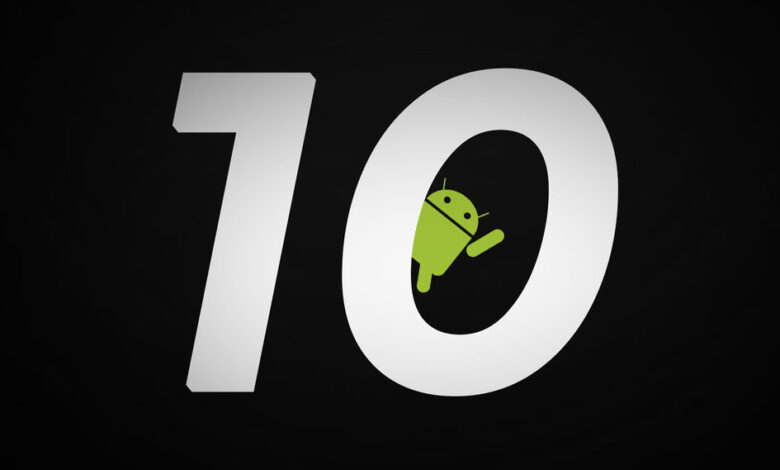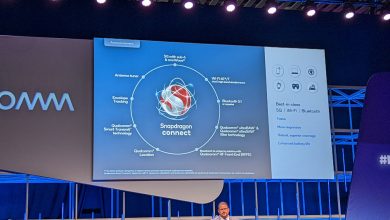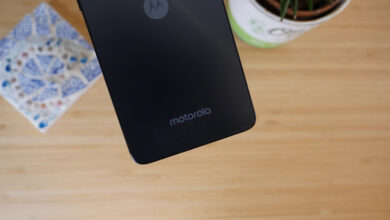The best Android 10 features

[ad_1]
(Pocket-lint) – In 2019 Google launched Android 10 and – despite it being into its second year now – it’s still the software launching on a lot of phones. While Android 11 has since superceded the software, there’s a good chance your phone is still running Android 10 if you’ve bought it anytime in the past 12-18 months.
Some devices, including older ones, may not even receive it. We’re keeping a running list of when Android 10 will arrive for your phone right here.
There was a time when major Android updates had dessert-themed names, in alphabetical order. However, months before they release, they have codenames. For instance, Android Pie was Android P, and before that, Android Oreo was Android O.
In the case of Android 10 we had Android Q. Luckily, Google didn’t give us Android Quiche. Instead, it ditched the sweet names and decided to use numbers, starting with Android 10.
On the surface, Android 10 didn’t change a lot visually and seemed very much like Android Pie, the version that came before it.
Android 10 features
Here are some of the biggest features included in Android 10. It’s worth noting, any settings menus and processes may be a little different depending which manufacturer’s phone you have. Some like to add their own spin on things, but they should be largely similar. If in doubt, just search for the feature at the top of the main Settings screen.
Dark Mode
Android 10 users can enable a dark mode to darken everything from notifications to the settings. Unlike previous dark themes built into the stock Android experience, however, it applies to all apps that support it, too.
Here’s how to turn it on:
- Go to Settings > Display
- Toggle on “Dark theme”.
If you look in your quick settings menu (swipe down from the top), you can also access a dark mode switch there. You may need to click on the pencil icon in the lower-left corner of the quick settings drop-down to find the new setting.
Focus Mode
Android 10 comes with tools designed to help you disconnect. The biggest of these is Focus Mode. Here’s how it to turn it on:
- To enable the new Focus Mode, you must have the Digital Wellbeing app. Go to Settings > Digital Wellbeing and parental controls > Ways to Disconnect.
- You’ll see three options – tap on each to set it up: Dashboard (set timers for specific apps); Wind Down (use Night Light to tint the screen for dim lighting and turn on Do Not Disturb); Focus Mode (pause apps such as Facebook or Instagram so that you can literally focus on and not get distracted).
Live Caption
With Live Captions, Google Assistant can process speech on-device at near-zero latency, serving up transcriptions in real-time, even when you have no network connection. Think of these as real-time captions for just about everything on your phone, and it all happens locally on the device. Closed captions are crucial for deaf and hard-of-hearing people. You’ll be able to turn on this feature under accessibility settings.
New gestures
The back button, a classic navigation feature in Android, was ditched in Android 10. Alternatively, the update includes a full set of gestures so that Android users can move beyond buttons, virtual or otherwise. So, instead of the three icons at the bottom of your screen, you will see a black strip with a white dash in the centre (or white strip with a black background, depending on the page’s background colour).
Google has made gestures optional, however. Here’s how to enable them:
- Go to Settings > System > Gestures > System Navigation (or 3-button navigation)
- From the three choices, select “Gesture navigation.”
- There will be a tutorial of the various gestures and how to use them.
You can click the settings cog to the right of “Gesture navigation” to set the sensitivity of the screen when you back-swipe.
Android 10 includes new privacy features such as new location permissions, restrictions on background activity starts, changes to data and identifiers, and more! Find out how to test and update your apps in this post. #Android10
Read here → https://t.co/kRwzYoFVV2 pic.twitter.com/Oz7p48z3tl
— Android Developers (@AndroidDev) September 4, 2019
Location Permissions
In Android 10, you can set permissions so that an app can only track your location while it is in use. To find which of your apps have permission to track your location, and to change that, follow these steps:
- Go to Settings
- Go to Apps and notifications > Permission manager > Location
- You’ll get a list of all the apps that have permission to track your phone’s location. Tap on each ond to change its permission to “Allow all the time”, “Allow only while using the app”, or “Deny”.
Privacy in Settings
There is a Privacy Settings menu. It’s where you can find things like your notification controls for your lock screen plus an autofill manager for forms, and several other privacy features.
Notification controls
In Android 10, you get more notification control options. When you swipe away a notification, you’ll be able to either mark notifications from that app as “silent” (to stop them) or “alert” (so you get a ping). If you don’t like either, you can press the “turn off notifications” option.
Bubbles
This is Google’s solution for better multitasking on a phone. It reminds us of Facebook Messenger’s Chat Heads, but this Android 10 implementation will be system-wide. In an Android Developers blog post, Google provided guidelines for developers to implement the feature in their apps.
Bubbles work like this: When an alert is received from an app that uses Bubbles, a tiny circular notification will appear on your screen for you to tap. For a messaging app, for instance, you’d tap the bubble notification to perhaps view a conversation thread or reply without having to launch the entire app. Google suggested developers could also use Bubbles for notes, arrival times, and calls.
Miscellaneous
- Google included limits on the access apps will have to photos, videos, audio, and downloaded files on devices.
- More control over how apps resume and pause when running in the background.
- A Settings Panel API that lets developers push a pop-menu for settings like Bluetooth, Wi-Fi, and NFC, so users won’t have to exit apps to go to settings and back.
- Improved sharing shortcuts, designed to make sharing targets more obvious so you can jump right into other apps.
- Google Assistant is able to do specific things in your favourite apps. Think: “Hey Google, start my run in Nike Run Club.”
- Google is supporting foldable phones – there’s even an Android 10 foldable screen emulator so developers can see how their apps might look.
How to get Android 10
- Open Settings on your phone
- Go to System > Advanced > System update
If the Android 10 update is available for your specific phone, it will appear and take several minutes to install. If the update isn’t yet available, you’ll need to wait longer for it. Depending on your phone and its manufacturer, it may take several weeks or months to receive the update, if it does arrive at all. For more about which phones will be able to update to Android 10, check out our separate guide.
Writing by Maggie Tillman. Editing by Cam Bunton.
[ad_2]
Source link






